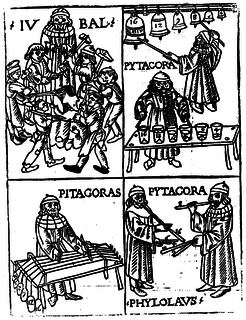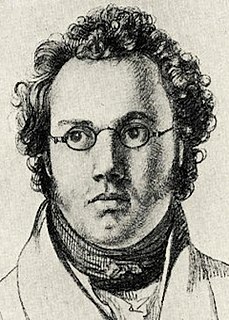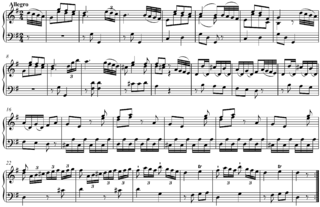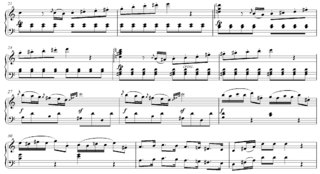

In music theory, the recapitulation is one of the sections of a movement written in sonata form. The recapitulation occurs after the movement's development section, and typically presents once more the musical themes from the movement's exposition. This material is most often recapitulated in the tonic key of the movement, in such a way that it reaffirms that key as the movement's home key.

Music theory is the study of the practices and possibilities of music. The Oxford Companion to Music describes three interrelated uses of the term "music theory":
The first is what is otherwise called 'rudiments', currently taught as the elements of notation, of key signatures, of time signatures, of rhythmic notation, and so on. [...] The second is the study of writings about music from ancient times onwards. [...] The third is an area of current musicological study that seeks to define processes and general principles in music — a sphere of research that can be distinguished from analysis in that it takes as its starting-point not the individual work or performance but the fundamental materials from which it is built.

In music, a section is a complete, but not independent, musical idea. Types of sections include the introduction or intro, exposition, development, recapitulation, verse, chorus or refrain, conclusion, coda or outro, fadeout, bridge or interlude. In sectional forms such as binary, the larger unit (form) is built from various smaller clear-cut units (sections) in combination, analogous to stanzas in poetry or somewhat like stacking lego.
A movement is a self-contained part of a musical composition or musical form. While individual or selected movements from a composition are sometimes performed separately, a performance of the complete work requires all the movements to be performed in succession. A movement is a section, "a major structural unit perceived as the result of the coincidence of relatively large numbers of structural phenomena".
A unit of a larger work that may stand by itself as a complete composition. Such divisions are usually self-contained. Most often the sequence of movements is arranged fast-slow-fast or in some other order that provides contrast.
Contents
In some sonata form movements, the recapitulation presents a straightforward image of the movement's exposition. However, many sonata form movements, even early examples, depart from this simple procedure. Devices used by composers include incorporating a secondary development section, or varying the character of the original material, or rearranging its order, or adding new material, or omitting material altogether, or overlaying material that was kept separate in the exposition.

A composer is a musician who is an author of music in any form, including vocal music, instrumental music, electronic music, and music which combines multiple forms. A composer may create music in any music genre, including, for example, classical music, musical theatre, blues, folk music, jazz, and popular music. Composers often express their works in a written musical score using musical notation.
A secondary development, in music, is a section that appears in certain musical movements written in sonata form. The secondary development resembles a development section in its musical texture, but is shorter and occurs as a kind of excursion within the recapitulation section.
The composer of a sonata form movement may disguise the start of the recapitulation as an extension of the development section. Conversely, the composer may write a "false recapitulation", which gives the listener the idea that the recapitulation has begun, but proves on further listening to be an extension of the development section.











